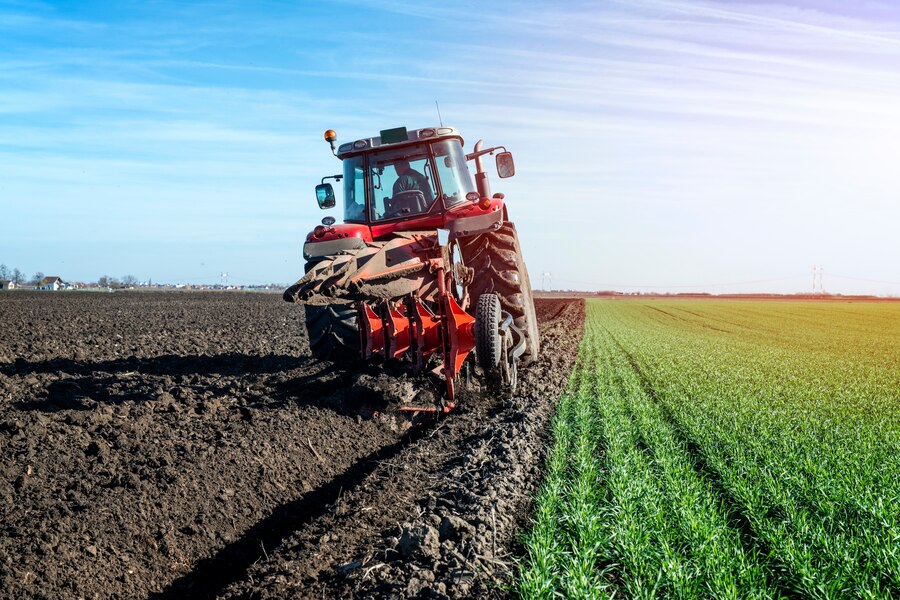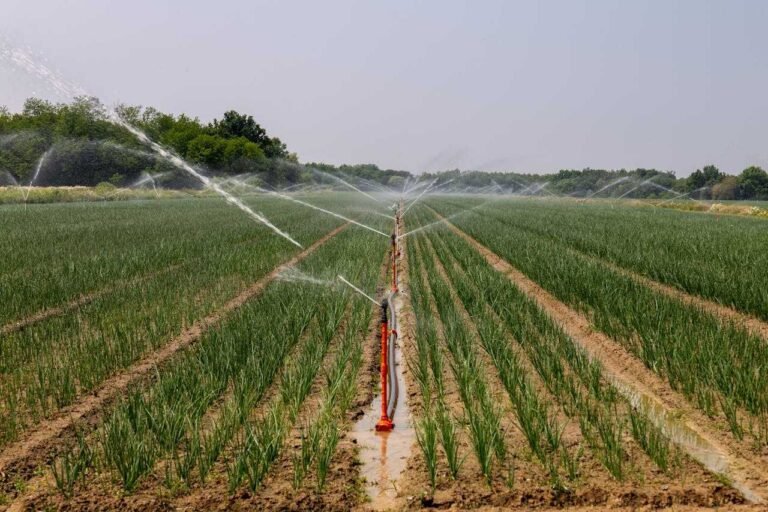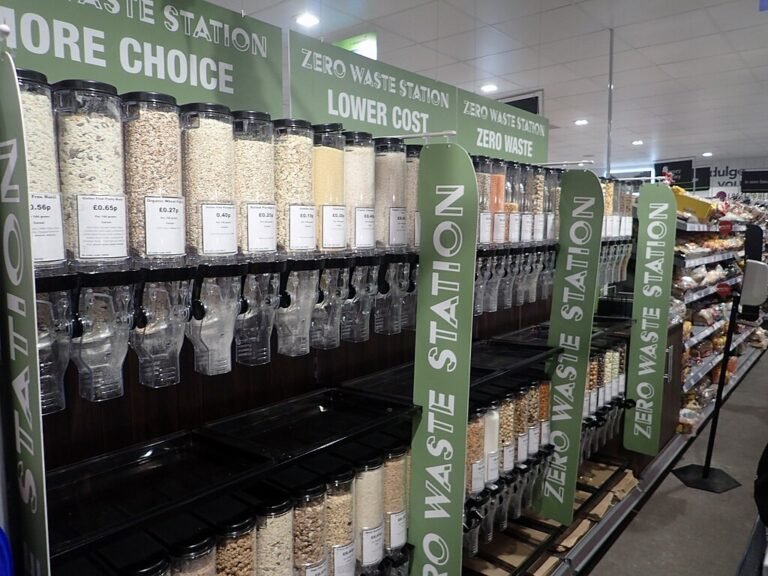How Does Industrial Agriculture Promote Farming Techniques that are Ecologically Destructive?
When I visited my grandmother’s farm as a child, I marvelled at how vibrant and alive everything seemed. Rows of crops flourished alongside buzzing bees, and the soil smelled rich and earthy. Fast forward to today, and many farms look drastically different—vast, monoculture fields sprayed with chemicals and devoid of life. Industrial agriculture, touted as a solution to feed our growing population, has undeniably boosted food production. But at what cost?
Beneath its promise of abundance lies an unsettling reality: the techniques often employed in industrial farming degrade ecosystems, harm biodiversity, and threaten long-term sustainability. For instance, studies from the United Nations Environment Programme reveal that agricultural runoff is a leading cause of water pollution, impacting aquatic ecosystems worldwide. Similarly, the Food and Agriculture Organisation estimates that modern farming practices contribute to 70-90% of global deforestation.
This article takes you beyond the surface, exploring the methods, impacts, and alternatives to industrial agriculture. Through compelling data, expert insights, and real-life stories from farmers like Sarah—who transitioned away from harmful practices—you’ll gain a deeper understanding of how we can balance food security with ecological health. Together, we’ll uncover actionable solutions to transform our food systems for the better.

In This Article
- The Rise of Industrial Agriculture
- The Ecological Costs of Industrial Agriculture
- Toward Sustainable Alternatives: A Path to Ecological Balance
- Conclusion
- Resources for Further Learning
The Rise of Industrial Agriculture
Industrial agriculture as we know it took root during the Industrial Revolution, transforming farming practices with advancements in machinery, synthetic fertilisers, and pesticides. These innovations promised higher yields and greater efficiency, enabling nations like the United States and China to secure food supplies for growing populations. But this relentless pursuit of scale and productivity often came at a hidden cost: the health of our ecosystems.
Growing up, I heard stories from my grandmother, who was a farmer. She witnessed the shift from traditional, nature-aligned methods to industrial practices. “Farming used to mean working with nature,” she’d say, “but now, it’s about controlling it with chemicals and machines.” Her words highlighted the uneasy balance between tradition and modernisation. While his farm prospered for a time, she lamented the long-term damage she saw—from depleted soil to dwindling biodiversity.
Studies confirm his observations. According to a report by the FAO, the overuse of synthetic inputs in industrial agriculture has degraded nearly 33% of the world’s arable land. This cycle of degradation underscores the urgent need for a paradigm shift—one that prioritises both productivity and ecological health.
Learn More: Increase in the World’s Population Will Require an Increase in Sustainable Practices
The Ecological Costs of Industrial Agriculture
Monoculture Farming: A Recipe for Biodiversity Loss
Monoculture farming—the practice of growing a single crop species over vast areas—offers simplicity but wreaks havoc on the environment. I learned this the hard way on a visit to a Midwest corn farm, where the expansive fields stretched as far as the eye could see. The farmer proudly explained how efficient it was to plant just one crop, but he also lamented the increased pest problems and soil exhaustion over time.
Biodiversity Decline
Diverse ecosystems naturally regulate pests and diseases. However, monoculture farming removes this diversity, creating a perfect storm for pest outbreaks and crop diseases. A vibrant mix of plant species can provide natural pest deterrents and enhance soil health, but monoculture eliminates these benefits, making farmers increasingly reliant on synthetic pesticides.
Soil Degradation
Repeatedly planting the same crop drains specific nutrients from the soil. Without replenishment through diverse crop rotations, farmers turn to synthetic fertilisers. These fertilisers temporarily boost yields but fail to restore the soil’s natural fertility. Over time, the land becomes less productive, locking farmers into a cycle of dependency.
Water Overuse
Monoculture fields often lack the varied root systems needed to stabilise soil and retain water. As a result, these farms require excessive irrigation, often depleting local water supplies. For instance, California’s Central Valley almond orchards demand staggering amounts of water. In a state already plagued by drought, this practice has severe consequences for ecosystems and communities alike.
Data Insight: According to the United Nations Environment Programme (UNEP), 70% of agricultural biodiversity has been lost since the early 20th century due to monoculture farming. This loss not only endangers food security but also weakens the resilience of ecosystems.
Synthetic Chemicals: Silent Polluters
Synthetic fertilisers and pesticides have revolutionised farming, but their ecological costs are immense. If you are fortunate to visit India’s Punjab region, often called the “Granary of India,” you will see firsthand how overreliance on these chemicals has devastated local soils and water sources.
Soil Contamination
A 2024 study published in Agronomy suggests that excessive fertiliser use disrupts the soil’s microbiota, reducing its natural fertility. The once-fertile fields of Punjab now struggle to produce crops without ever-increasing chemical inputs.
Water Pollution
Chemical runoff contaminates rivers, lakes, and even oceans. This pollution harms aquatic life and disrupts entire ecosystems. Studies show that pesticide residues have been found in fish, birds, and other wildlife, proving the far-reaching impacts of these chemicals.
Pest Resistance
Over time, pests adapt to pesticides, rendering them ineffective. This resistance forces farmers to apply even stronger chemicals, perpetuating a harmful cycle.
Case Study: The Punjab region’s groundwater has become heavily contaminated due to decades of synthetic fertilizer use, posing significant health risks to local communities. Public health experts warn that these practices could lead to long-term ecological collapse if not addressed.
Deforestation: Clearing Land at Nature’s Expense
The global demand for agricultural land has driven large-scale deforestation, especially in biodiverse regions like the Amazon rainforest. On a visit to Brazil, I saw the stark contrast between lush, untouched forests and barren soybean fields.
Habitat Destruction
Deforestation displaces countless species, disrupting ecosystems and pushing some to the brink of extinction. The Amazon, often called “the lungs of the Earth,” is now losing its ability to regulate global climate patterns due to large-scale clearing.
Carbon Emissions
Trees absorb and store carbon, acting as natural buffers against climate change. When forests are cleared, this stored carbon is released into the atmosphere, contributing significantly to global warming.
Expert Insight: Dr. Jane Goodall warns, “Our insatiable appetite for more agricultural land is destroying the very systems that sustain life on Earth.”
Learn More: What is Vertical Hydroponic Farming? A Complete Guide to Sustainable Urban Agriculture
Greenhouse Gas Emissions: An Overlooked Contributor
Industrial agriculture is a major source of greenhouse gas emissions, both directly and indirectly.
Direct Emissions
Fuel-powered machinery used in planting, harvesting, and transporting crops releases significant amounts of CO2. During harvest season on a family farm I visited, tractors and trucks operated non-stop, their exhaust forming a visible haze over the fields.
Indirect Emissions
The production of synthetic fertilisers releases nitrous oxide, a greenhouse gas 300 times more potent than CO2. This emission is often overlooked but represents a significant contributor to climate change.
Data Table: Greenhouse Gas Contributions
| Source | Emissions (Metric Tons CO2 Equivalent) | Percentage of Global Total |
|---|---|---|
| Agricultural Machinery | 700 million | 4% |
| Fertilizer Production | 1.4 billion | 8% |
| Land Use Change (Deforestation) | 3 billion | 20% |
Toward Sustainable Alternatives: A Path to Ecological Balance
While the challenges of industrial agriculture are daunting, solutions are within reach. By embracing sustainable practices, we can ensure food security while nurturing the planet. Here’s how we can make the shift—one farm, one policy, one informed decision at a time.
1. Regenerative Agriculture: Healing the Soil
Regenerative agriculture is more than a farming method; it’s a movement that restores soil health, boosts biodiversity, and combats climate change. This approach uses crop rotation, cover cropping, and reduced tillage to rebuild soil fertility and structure.
Personal Story: Gabe Brown, a farmer in North Dakota, faced near bankruptcy after years of conventional farming. By switching to regenerative techniques, he not only revived his soil but also increased his crop yields and profitability. His farm became a model of resilience, inspiring countless others to make the change.
Key Benefits:
- Improved Soil Fertility: Healthy soil teems with microorganisms that naturally enrich crops.
- Erosion Control: Cover crops protect the soil from wind and water erosion.
- Biodiversity Boost: Diverse crops and practices attract pollinators and other beneficial species.
Data Insight: According to a document by the Rodale Institute, regenerative practices can sequester up to 1.2 tons of CO2 per acre annually, helping mitigate climate change.
Clear Actions for Farmers:
- Implement crop rotation with nitrogen-fixing plants like legumes.
- Use cover crops during off-seasons to prevent soil erosion.
- Minimise tilling to maintain soil structure and organic matter.
2. Agroforestry: Marrying Trees with Agriculture
Agroforestry involves integrating trees into agricultural landscapes, creating a harmonious system where both crops and trees thrive.
Success Story: In Niger, smallholder farmers have adopted agroforestry to combat desertification. By planting “farmer-managed natural regeneration” trees, they’ve restored over 5 million hectares of degraded land. These efforts have improved food security and revitalized ecosystems.
Key Benefits:
- Enhanced Biodiversity: Trees provide habitats for birds, insects, and other wildlife.
- Water Retention: Tree roots improve the soil’s water-holding capacity.
- Carbon Sequestration: Trees absorb and store carbon, offsetting emissions.
Interactive Table: Agroforestry Benefits vs. Traditional Farming
| Feature | Agroforestry | Traditional Farming |
|---|---|---|
| Biodiversity | High | Low |
| Carbon Sequestration | Significant | Minimal |
| Water Usage Efficiency | Improved | High dependency on irrigation |
Clear Actions for Farmers:
- Plant tree species that complement your crops, like nitrogen-fixing trees.
- Use tree rows as windbreaks to reduce soil erosion.
- Train staff on pruning and tree maintenance for long-term benefits.
Learn More: 10 Negative Effects of Deforestation on the Environment: A Comprehensive Guide
3. Precision Agriculture: Smart Farming for a Smarter Planet
Precision agriculture leverages technology to optimise resource use, reducing waste and environmental impact. Tools like GPS-guided tractors, drones, and AI-powered analytics enable farmers to make data-driven decisions.
Example: A corn farmer in Iowa implemented drone monitoring to identify pest hotspots, reducing pesticide use by 30%. This not only saved money but also minimized chemical runoff into nearby water bodies.
Key Benefits:
- Resource Efficiency: Lower usage of water, fertilisers, and pesticides.
- High Yields: Targeted interventions ensure optimal plant health.
- Environmental Protection: Reduced runoff means less pollution of waterways.
Expert Insight: The International Society of Precision Agriculture estimates that widespread adoption of precision techniques could reduce global pesticide use by 20% while maintaining crop yields.
Clear Actions for Farmers:
- Invest in GPS-guided equipment for accurate planting and spraying.
- Use drones for real-time field monitoring.
- Analyse data to tailor interventions for specific field zones.
4. Policy and Consumer Action: The Power of Collective Effort
While farmers are at the frontline, governments and consumers have pivotal roles in driving sustainable change.
Policy Recommendations:
- Subsidise regenerative and agroforestry practices.
- Enforce stricter regulations on synthetic chemical use.
- Incentivise research into sustainable agricultural technologies.
Consumer Choices:
- Support local and organic farms through purchases.
- Reduce food waste by planning meals and storing food properly.
- Advocate for transparency in food production practices.
Personal Reflection: As a consumer, I made the shift to buying produce from local farmers’ markets. Not only did I notice the difference in taste and quality, but I also felt empowered knowing my choices supported sustainable practices.
Clear Actions for Everyone:
- Choose products certified as organic or sustainably produced.
- Write to policymakers advocating for eco-friendly agricultural policies.
- Educate yourself and others about the environmental impact of food choices
Conclusion
Industrial agriculture has undeniably boosted food production, but its ecological costs are too high to ignore. By embracing sustainable alternatives and advocating for systemic change, we can build an agricultural model that feeds the world without destroying it. Let’s strive for an approach that harmonises with nature, ensuring a healthier planet for future generations.
As my grandmother used to say, “The land gives us life; it’s our duty to protect it.”
Resources for Further Learning
- Books: The Soil Will Save Us by Kristin Ohlson.
- Documentaries: Kiss the Ground.
- Organisations: Rodale Institute, Union of Concerned Scientists.







